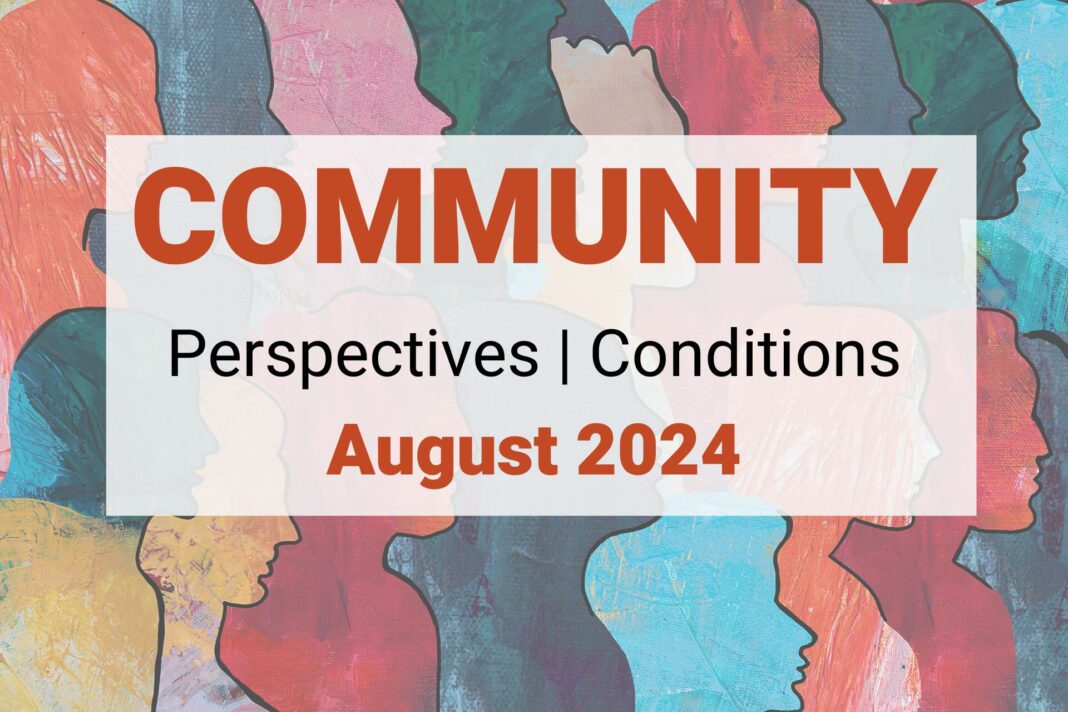Federal Reserve Banks across the country collect anecdotes from contacts and hone in on concerns for Federal Reserve Beige Book summaries, published eight times each year. Historically, insights about conditions affecting low- and moderate-income communities have come from the perspective of businesses. Several Reserve Banks began including “Community Conditions” and “Community Perspectives” sections in the fall of 2022. These sections provide insight into local changes through direct accounts of nonprofit and community leaders and workforce professionals serving lower-income people. Here are some takeaways from the August 2024 Beige Book, which was prepared at the Federal Reserve Bank of Cleveland and based on information collected on or before August 26, 2024.
Please note that the Beige Book summarizes comments received from contacts outside the Federal Reserve and is not a commentary on the views of Federal Reserve officials.
“Community leaders noted difficulty accessing and operationalizing recent federal grants for funding to non-profits, community groups, and state and local governments, in part due to the limited availability of workers with the right skills to execute the work. To address this shortfall, state and local governments are establishing programs and industry partnerships to develop fast-track training. Public-private partnerships have been integral to the development of workforce skills in areas necessary for the implementation of new community investments and improvements in technology infrastructure, including green energy installation and high-tech manufacturing.”
– New York Fed, Federal Reserve 2nd District, Community Perspectives
“Overall, community college contacts reported increased enrollment for the upcoming academic year, particularly in part-time and certificate programs. Some reported that enrollment increase among individuals who left during the pandemic. Demand for support services such as food, transportation, and mental health services remained elevated, and one contact said it was ‘at an all time high.’”
“Contacts cited the need to adapt their programs to the changing demands of employers in areas such as IT, manufacturing, and healthcare and to the needs of a shrinking traditional student population. Despite concerns about long-term enrollment declines, one contact noted that “it is our moment” to show community colleges’ return on investment.”
– Cleveland Fed, Federal Reserve 4th District, Community Conditions
“Organizations serving low- and moderate-income consumers said that clients’ economic experiences were largely unchanged over the reporting period. Contacts specifically supporting small businesses reported that many of their clients faced moderately more difficult financial conditions. Challenges stemmed from an elevated cost of capital, higher cost of inputs, and decreasing financial support from the federal government. Elevated wage expectations among qualified workers also presented a financial strain for many small businesses, as labor is often their single largest expense.”
– Atlanta Fed, Federal Reserve 6th District, Community Perspectives
“Community, nonprofit, and small business contacts saw little change in economic activity, though comments on a softening labor market were more prevalent than in recent reporting cycles. Reports on tax revenues from state governments were mixed, with little change on balance. Small business development centers noted an influx of interest in starting new businesses from people who had recently been laid off. Existing businesses were seeking financing to cover higher operating costs because the ability to pass price increases onto customers had “sailed.” Leaders of nonprofit organizations continued to report high demand for their services and lower revenues, compelling some to dip into reserves. Help with utility, food, and housing costs were the leading requests from low-income consumers, according to social service contacts.”
– Chicago Fed, Federal Reserve 7th District, Community Conditions
“More low- and moderate-income (LMI) mortgage borrowers exhibited signs of stress in recent months. Housing counselors reported the ability of LMI borrowers to absorb a financial shock declined significantly due to two significant factors. First, many LMI homeowners reportedly were losing overtime hours they had relied on for paying their mortgages. Second, lenders indicated many LMI borrowers were struggling to make up the gap on their escrow to meet increases in monthly payments resulting from higher property insurance and taxes. The most common mitigation step was shopping for new insurance, with some contacts noting that homeowners purchased insurance with less coverage and greater personal liability.”
– Kansas City Fed, Federal Reserve 10th District, Community Conditions
“Nonprofit service providers noted an uptick in demand stemming from Hurricane Beryl. Some contacts noted difficulties in serving clients because their own establishments suffered damages and power outages. In addition to food and water, organizations handed out gift cards to meet essential needs. One contact raised the concern that disasters disproportionately affect low-to moderate-income households, and the impact can last for weeks to months. Several contacts are looking to prepare for future storms, such as addressing the lack of power generators in senior living facilities. A contact in Houston noted the need to be proactive and not reactive to disasters as ‘disasters are constant in our communities.’”
– Dallas Fed, Federal Reserve 11th District, Community Perspectives
“Demand for community and support services rose somewhat as individuals and households continued to seek housing, medical, and food assistance. Closures of childcare facilities and recent heat waves in some regions led to higher demand for related support services. Nonprofit organizations faced more difficulties securing funds despite a slight increase in contributions from government sources. Small businesses continued to face challenges with access to credit and sluggish demand in urban cores, forcing some of them to close. One Washington contact noted a rise in demand for educational and training services such as credential and certificate programs.”
– San Francisco Fed, Federal Reserve 12th District, Community Conditions
Visit the August 2024 Beige Book report for a full national summary and more information about economic conditions from each Reserve Bank, including labor markets, financial services, real estate, and more.




